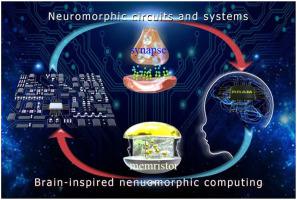Materials Today Physics ( IF 11.5 ) Pub Date : 2021-03-22 , DOI: 10.1016/j.mtphys.2021.100393 Bai Sun , Tao Guo , Guangdong Zhou , Shubham Ranjan , Yixuan Jiao , Lan Wei , Y. Norman Zhou , Yimin A. Wu

|
Synaptic devices, including synaptic memristor and synaptic transistor, are emerging nanoelectronic devices, which are expected to subvert traditional data storage and computing methodologies. In particular, the memristive device and synaptic transistor can conduct neuromorphic computing to mimic the functions of human brain, which enables high-performance super-parallel computing, so that it overcomes the von Neumann bottleneck. Based on a new perspective and understanding, this review focuses on the discussions of synaptic devices based neuromorphic computing applications in artificial intelligence. It begins with the memristive device structure, circuit theory, fabrication method and simulation of the neuromorphic computing. Then, it focuses on the materials selection, including the 0D quantum dots, 1D nanostructure, 2D nanomaterials, 3D architectures, transition metal oxide, ferroelectric materials, alloy, and organic materials. As followed, the printable synaptic devices and typical device integration systems for neuromorphic computing applications are discussed. Finally, the future applications in neuromorphic vision, sensor, human machine intelligence, topological and quantum computing are discussed.
中文翻译:

基于突触设备的神经形态计算在人工智能中的应用
包括突触忆阻器和突触晶体管的突触设备是新兴的纳米电子设备,有望颠覆传统的数据存储和计算方法。尤其是,忆阻器件和突触晶体管可以进行神经形态计算来模仿人脑的功能,从而实现高性能的超并行计算,从而克服了冯·诺依曼瓶颈。基于一个新的观点和理解,本文将重点讨论基于突触设备的神经形态计算在人工智能中的应用。它从忆阻器件的结构,电路理论,制造方法和神经形态计算的仿真开始。然后重点介绍材料的选择,包括0D量子点,1D纳米结构,2D纳米材料,3D架构,过渡金属氧化物,铁电材料,合金和有机材料。随后,讨论了用于神经形态计算应用的可打印突触设备和典型设备集成系统。最后,讨论了神经形态视觉,传感器,人机智能,拓扑和量子计算的未来应用。



























 京公网安备 11010802027423号
京公网安备 11010802027423号